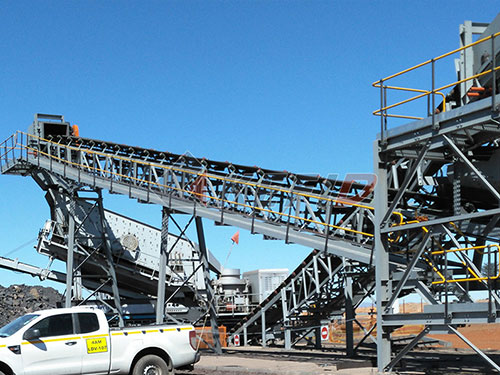An Impact Crusher is a type of crushing machine that uses impact force to break down materials. It is widely used in mining, construction, and recycling industries to crush rocks, concrete, and other hard materials into smaller, uniform-sized particles.
How an Impact Crusher Works:
1. Material Entry: Feed material enters the crushing chamber.
2. High-Speed Rotor Impact: A rotating rotor with hammers or blow bars strikes the material at high speed.
3. Impact & Shattering: The material is thrown against stationary impact plates (anvils), causing it to break apart.
4. Size Control: Adjustable aprons or curtains control the output size by regulating how long particles stay in the crushing zone.
5. Discharge: Crushed material exits through the bottom.
Types of Impact Crushers:
1. Horizontal Shaft Impact Crusher (HSI)
– Uses a horizontal rotor with hammers/blow bars.
– Best for softer materials like limestone and recycled concrete.
– Produces a more cubical product.
2. Vertical Shaft Impact Crusher (VSI)
– Uses a vertical rotor with high-speed impellers.
– Ideal for shaping hard and abrasive materials (e.g., sand production).
– Provides better particle shape for aggregates.
Advantages:
✔ High reduction ratio (up to 20:1)
✔ Good cubical product shape (better than jaw crushers)
✔ Efficient for medium-hard to soft materials
✔ Adjustable output size

Disadvantages:
✖ Higher wear on blow bars/hammers (especially with abrasive materials)
✖ Less effective for very hard rocks compared to cone crushers

Applications:
– Quarrying & mining (limestone, coal, etc.)
– Recycling (concrete, asphalt demolition waste)
– Aggregate production for construction
Would you like details on maintenance, specific brands, or operational tips?
Leave a Reply